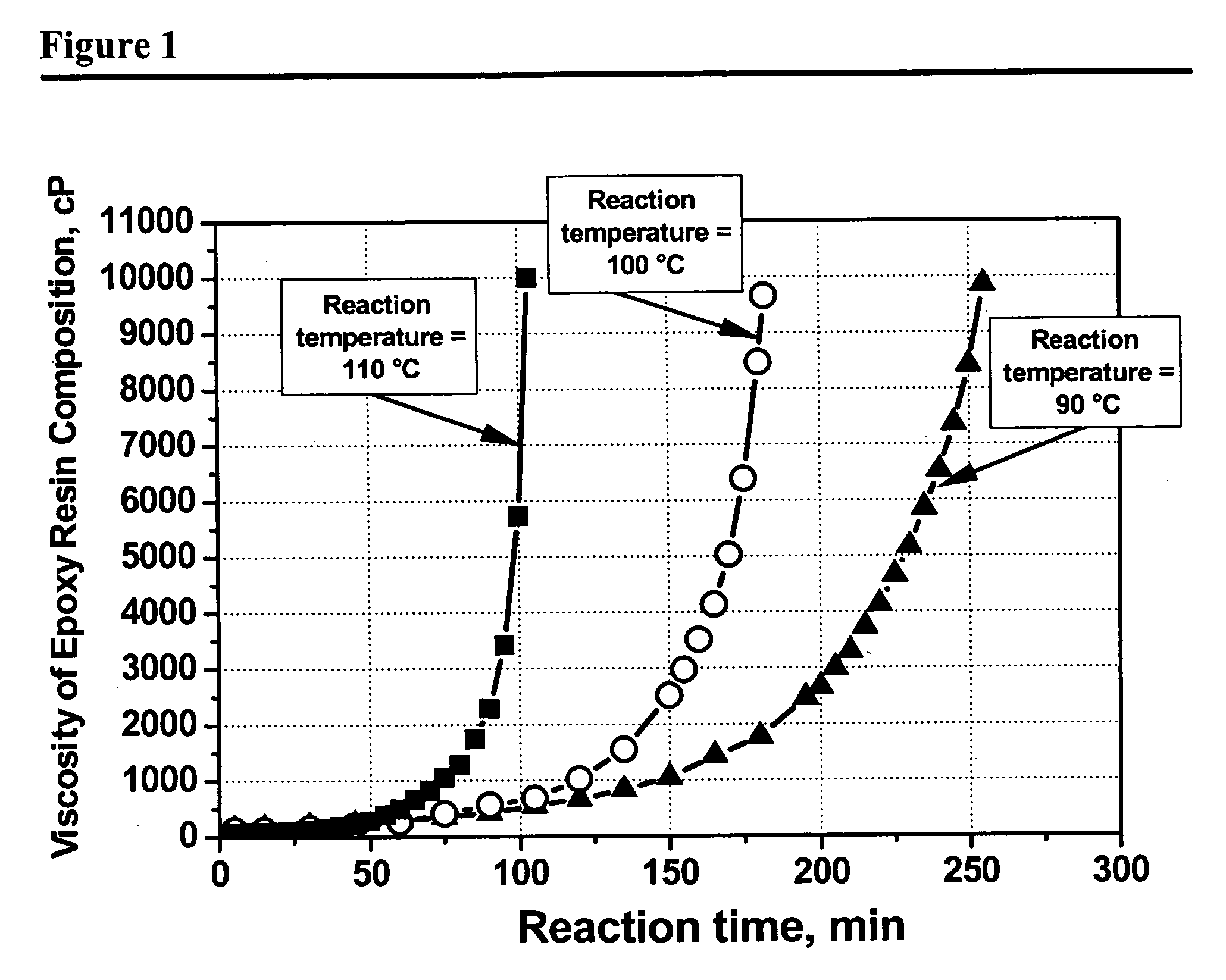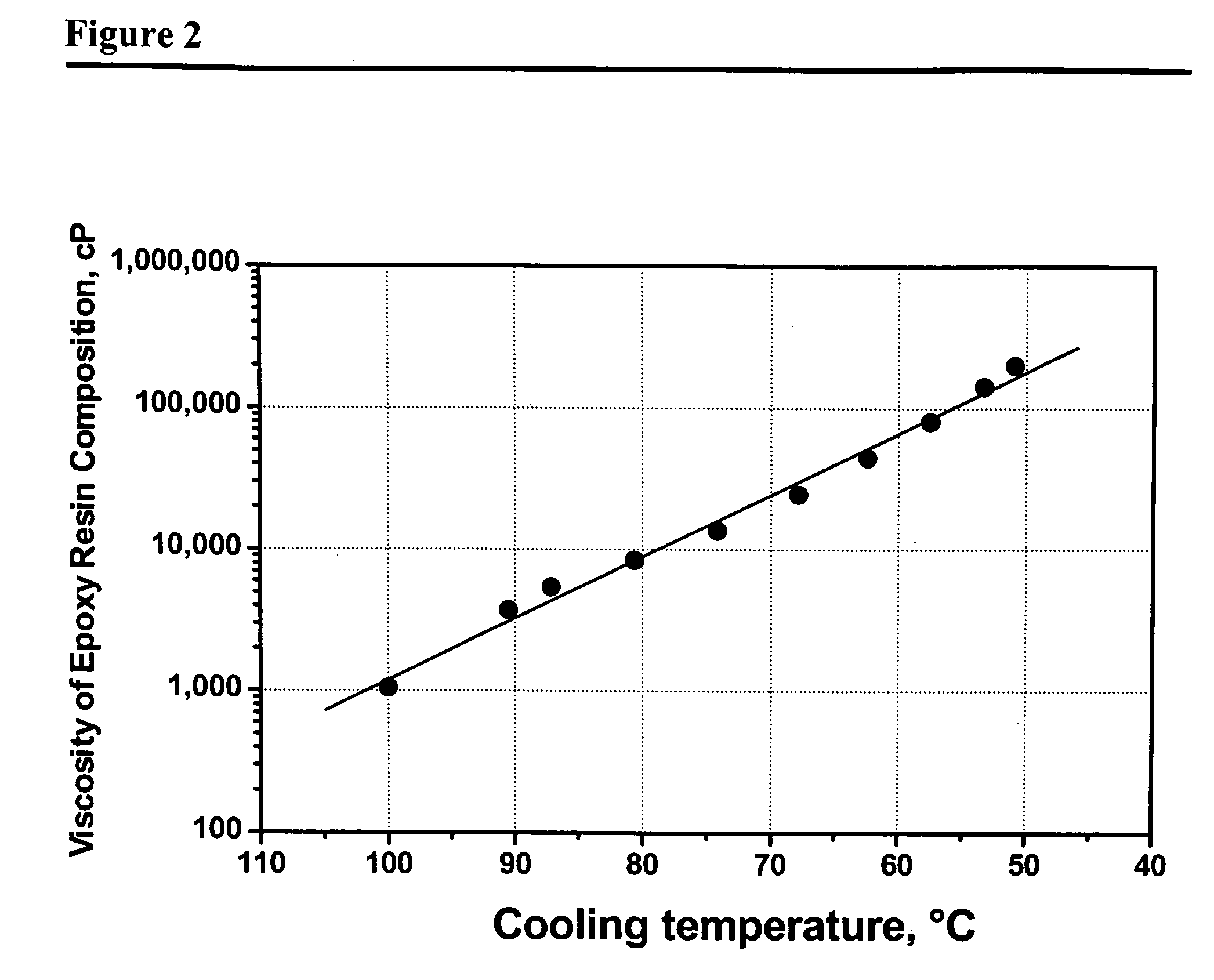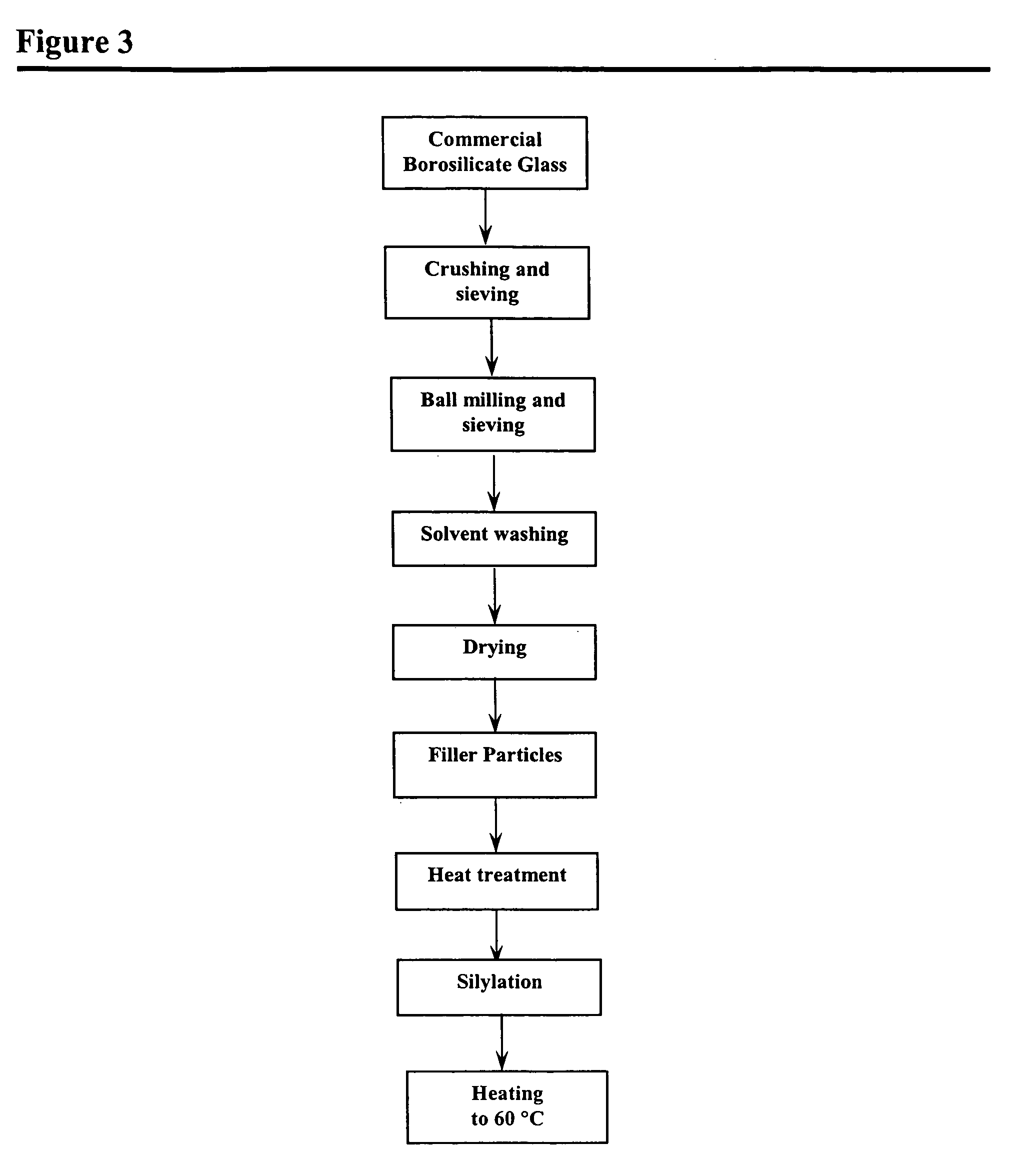Filled epoxy resin compositions
- Summary
- Abstract
- Description
- Claims
- Application Information
AI Technical Summary
Benefits of technology
Problems solved by technology
Method used
Image
Examples
example 1
Encapsulant Prepared from a Binary Epoxy Mixture
[0092] An encapsulant prepared from a binary epoxy mixture within the scope of the present invention is prepared in this illustrative Example.
Preparation of the Filler Particles:
[0093] The process of preparing the glass filler particles is illustrated schematically by the flowchart depicted in FIG. 3. A commercial, alkali-free borosilicate glass sheet, marketed under the trademark AF45 by Schott Corporation, having an average refractive index of about 1.526 at about 588 nm and at about 25° C., and having a refractive index variation within the glass of less than about 0.001, is crushed into coarse particles and then sieved through a #8 mesh sieve to eliminate all particles larger than about 2.36 mm in diameter. These sieved particles are placed in a 100 ml zirconia milling jar, along with 3 milling balls having diameters of 20 mm and 15 milling balls having diameters of 15 mm. The particles then are planetary ball-milled at about 2...
example 2
Filler Size Between 1 μm and 100 μm
[0102] An encapsulant is prepared and analyzed in the same manner as in EXAMPLE 1, except that the filler particles remaining in the solvent used in the step of solvent washing are used as filler. These particles are recovered by filtration and drying of the solvent. As shown in FIG. 8, the sizes of these particles ranges between 1 μm and 100 μm, with a peak at about 10 μm, as determined by the particle size analyzer. About 60% by volume of this powder is composed of particles having sizes less than about 10 μm. Properties of the encapsulant, the filler, and the epoxy resin composition prepared in this example, are shown in Table 3. The transmittance of the resulting encapsulant is about 48% and within the scope of this present invention. The results from this example shows that the particles smaller than about 10 μm are agglomerated in the encapsulant, which leads to a decrease in the transmittance.
[0103] Taken together, the results of EXAMPLES ...
example 3
Higher Filler Amount
[0106] An encapsulant is prepared and analyzed in the same manner as in EXAMPLE 1, except that the filler amount in the encapsulant is about 46% by volume, instead of about 16% by volume. Properties of the encapsulant, the filler, and the epoxy resin composition prepared in this example are shown in Table 3. The transmittance of this encapsulant is about 79.2%. The average CTE is about 14.4 ppm / ° C., with a CTE variation less than about ±1%.
[0107] Taken together, EXAMPLES 1 and 3 demonstrate that a wide range of filler loading can be incorporated into the encapsulant while retaining high transmittance, thereby allowing adjustment of transmittance and CTE to meet varying requirements. Taken together, EXAMPLES 1 and 3 and COMPARATIVE EXAMPLES 3 and 4 demonstrate that the filler content of the encapsulants should be preferably between 5% and 60% by volume, more preferably between 10% and 50% by volume, and most preferably between 15% and 40% by volume, to obtain b...
PUM
| Property | Measurement | Unit |
|---|---|---|
| Temperature | aaaaa | aaaaa |
| Length | aaaaa | aaaaa |
| Length | aaaaa | aaaaa |
Abstract
Description
Claims
Application Information
 Login to View More
Login to View More - R&D
- Intellectual Property
- Life Sciences
- Materials
- Tech Scout
- Unparalleled Data Quality
- Higher Quality Content
- 60% Fewer Hallucinations
Browse by: Latest US Patents, China's latest patents, Technical Efficacy Thesaurus, Application Domain, Technology Topic, Popular Technical Reports.
© 2025 PatSnap. All rights reserved.Legal|Privacy policy|Modern Slavery Act Transparency Statement|Sitemap|About US| Contact US: help@patsnap.com



